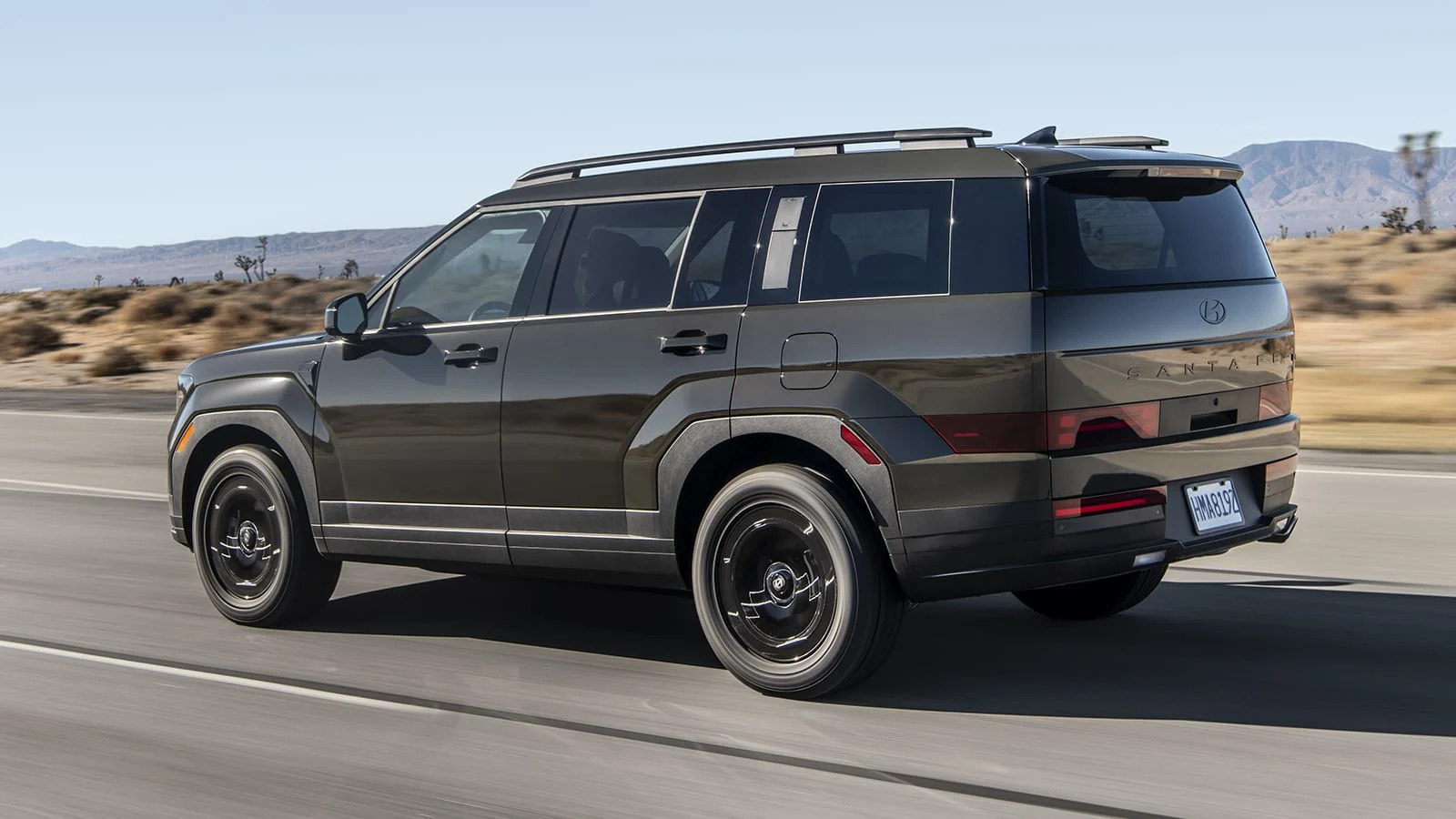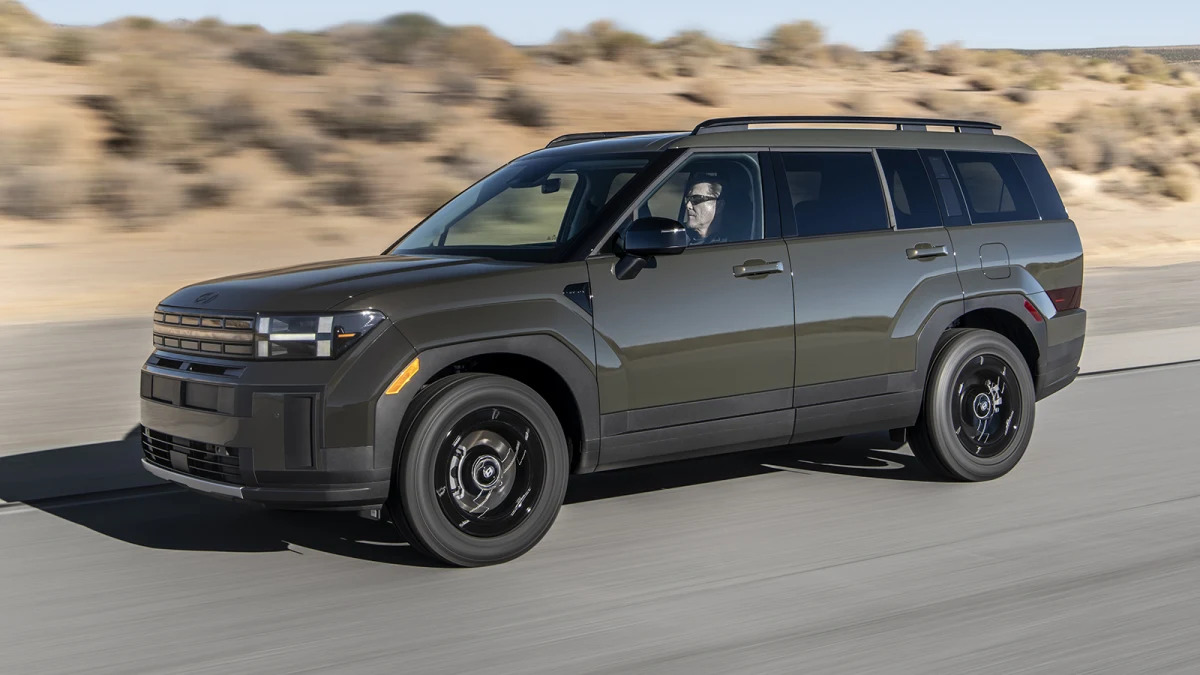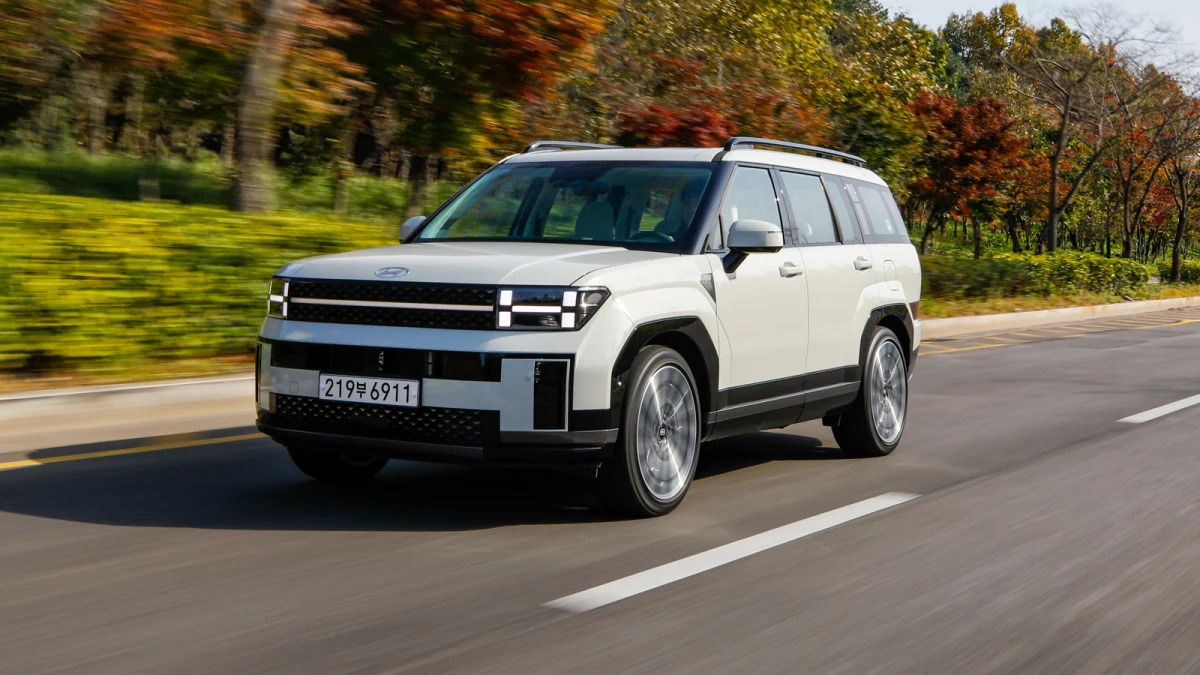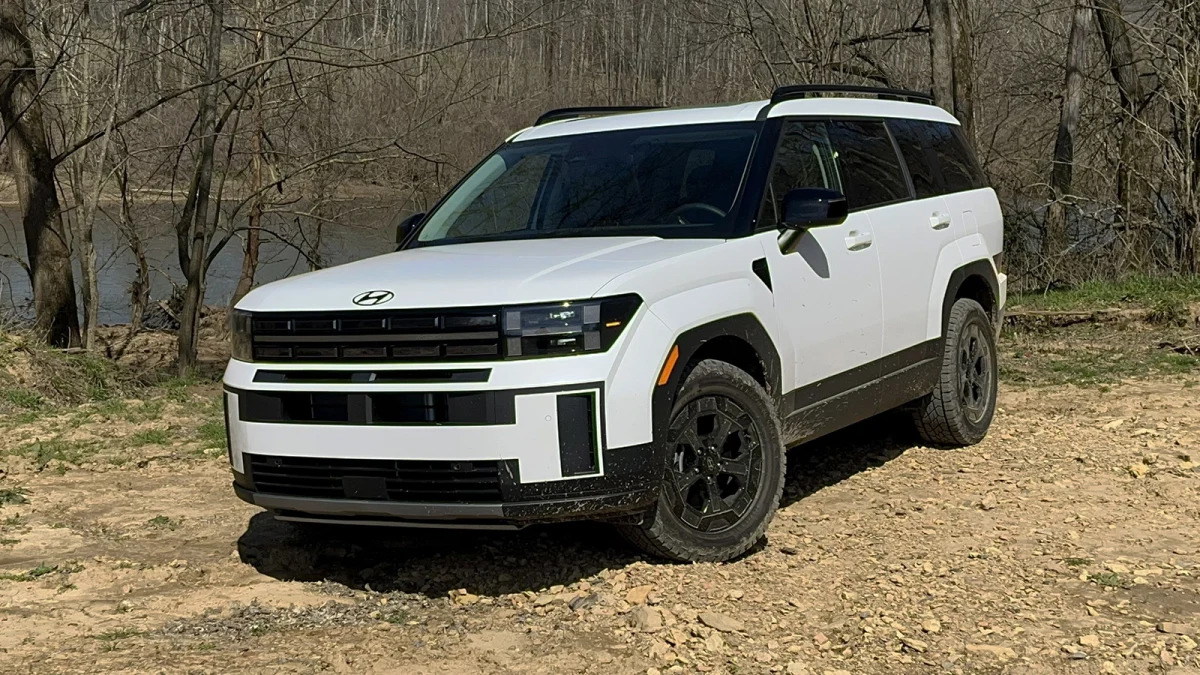Pros: Design is upscale and eye-catching; interior space is spectacular; it’s a tech powerhouse
Cons: Transmission can be unsmooth at times; no sporty intentions; meager cargo space when using third row
The 2024 Hyundai Santa Fe is a legitimately cool vehicle. That isn’t something we’ve been able to say about any Santa Fe up until now, and it’s all thanks to the Hyundai design department putting in some astounding work with this latest iteration of the three-row SUV. Its resemblance to Land Rovers of years past is uncanny, but even though it reminds of other SUVs, the box-like design is still plenty personal to and fitting with Hyundai. From the funky rear end to the massive windows and pixel lights, this Santa Fe is undoubtedly going to turn heads.
Its hybrid powertrain gives folks looking for efficiency a great option, maxing out at 36 mpg combined, and the 2.5-liter turbocharged engine is a torque monster that can tow up to 4,500 pounds in the off-road-centric XRT trim. Speaking of, the added lift and all-terrain tires on this model make it a nice option for those hoping to hit some rougher roads on their way to the campsite. Hyundai’s made the Santa Fe’s interior a lovely spot for all seven passengers, too, provided those in the third row are children or smaller adults. Its square shape gives it spectacular utility, though you won’t be fitting much behind the third row. If you want a more usable third row and space behind it, the Hyundai Palisade
Interior & Technology | Passenger & Cargo Space | Performance & Fuel Economy
What it’s like to drive | Pricing & Trim Levels | Crash Ratings & Safety Features
What’s new for 2024?
The Santa Fe is a totally new, redesigned model for 2024. It’s vastly different than the outgoing Santa Fe, as the SUV takes on a whole new character for this generation.
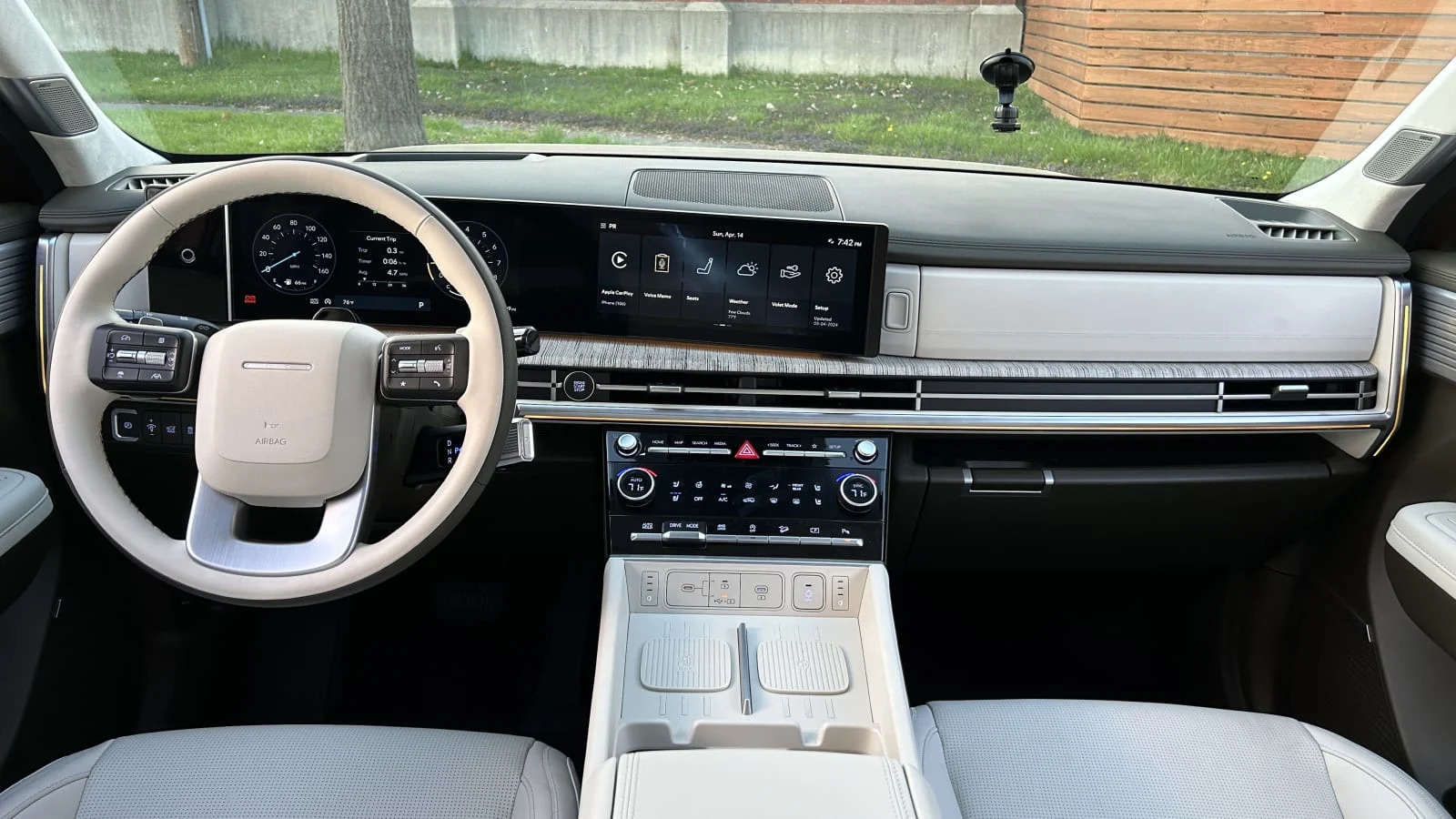
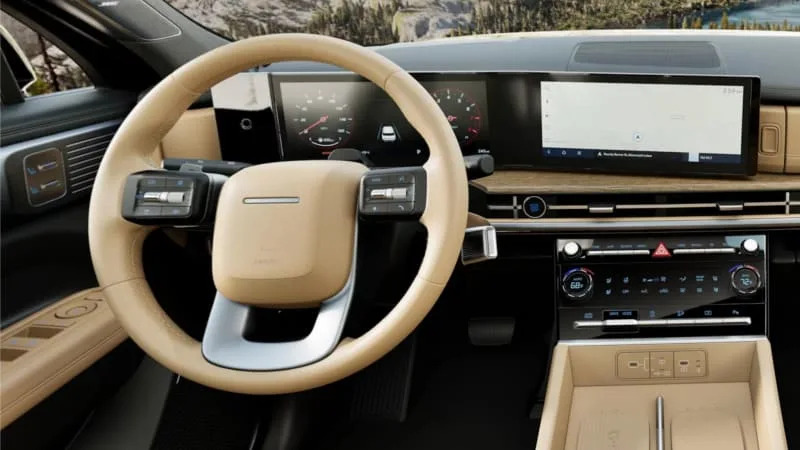
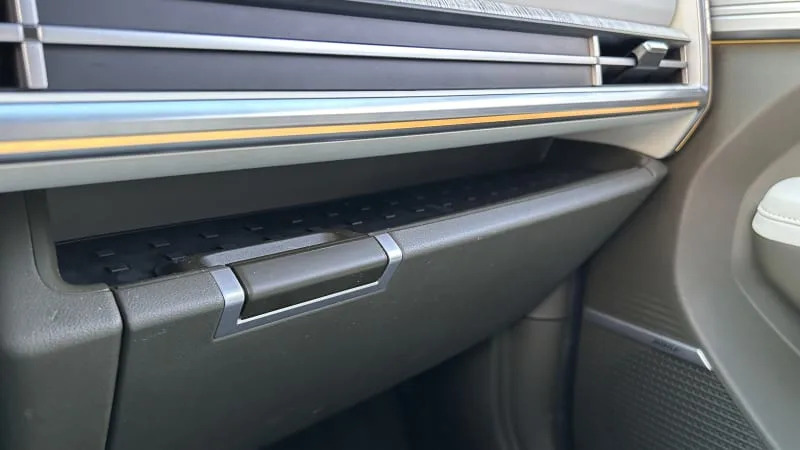
What are the Santa Fe’s interior and in-car technology like?
The Santa Fe’s Land Rover-like boxy design on the outside translates to the inside, as huge windows make for excellent visibility in all directions. It’s far classier inside than you’d expect for its price, made all the better when you select the two-tone green and cream or Pecan Brown (above, bottom left) interior options on upper trims.
The steering wheel also looks like it was ripped right out of a Land Rover, as do the squared-off air vents (that mimic the headlight design) and angled climate control screen flanked by temperature dials for the driver and passenger. The large center console area – provided you spec a higher trim – has two dedicated wireless charging pads for a pair of smartphones (a rarity, and some of the best wireless phone chargers we’ve ever used), and the cubby under the armrest opens from either the front or back.
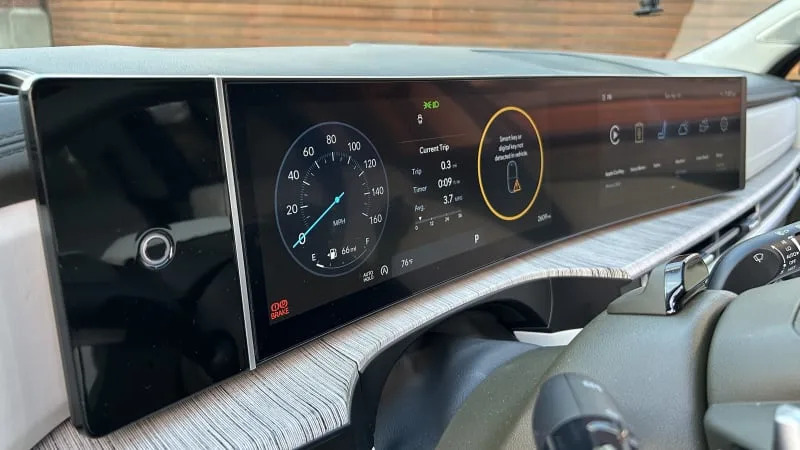
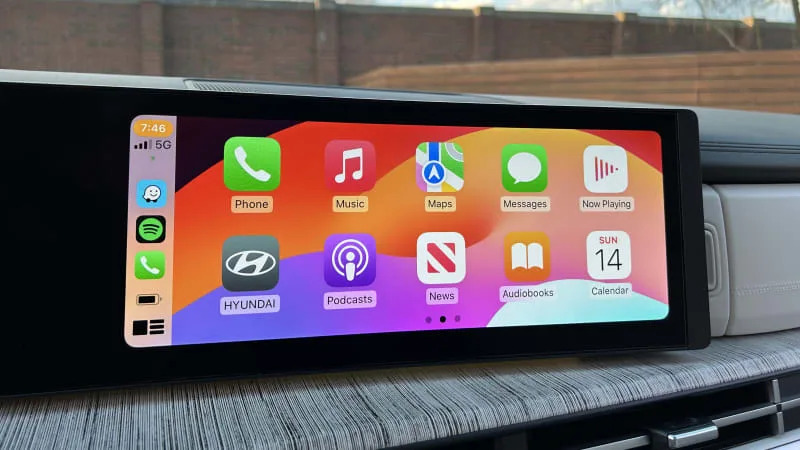
A curved display houses a pair of 12.3-inch screens, one for the gauges and another for the Hyundai Group’s latest multimedia system that gets wireless Apple CarPlay and Android Auto. To the right, there are two gloveboxes: a top one behind the dash panel with an optional UV-C sterilization compartment (it uses UV light to sterilize small items) and a more traditional one by the passenger’s knees. This is in addition to deep door pockets that’ll hold huge water bottles and storage space under the center console.
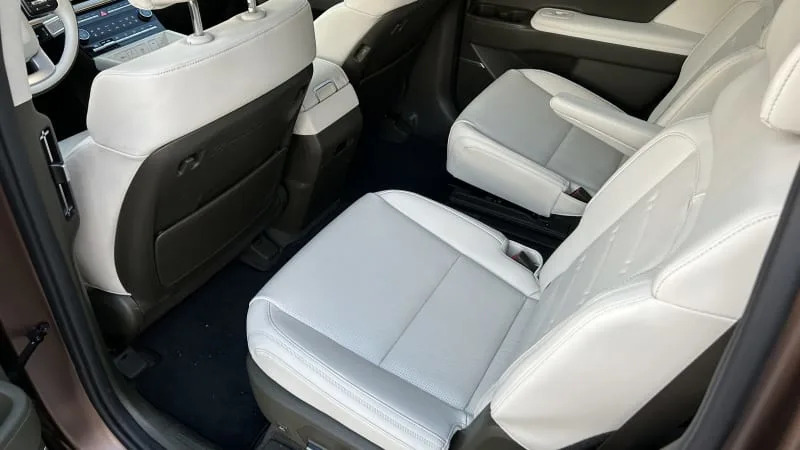
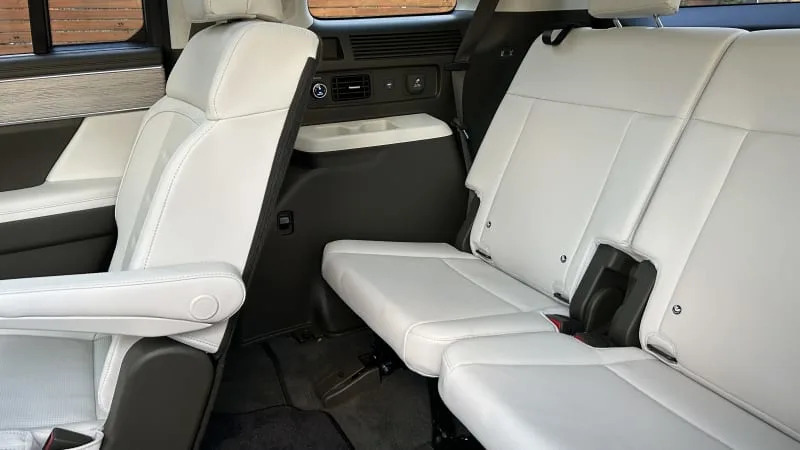
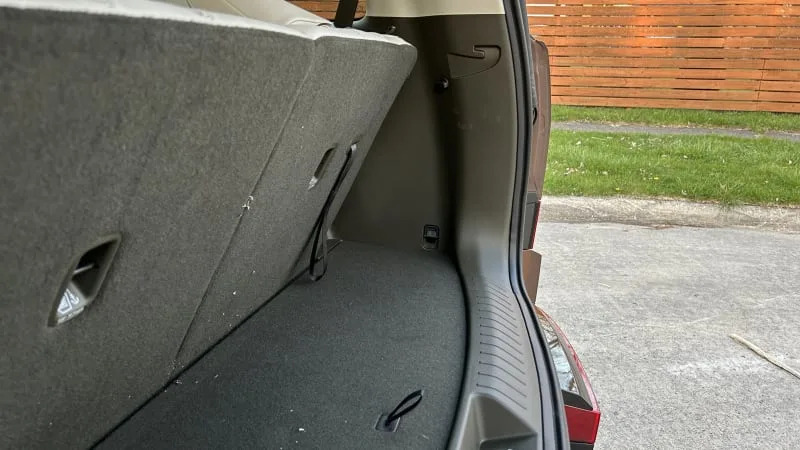
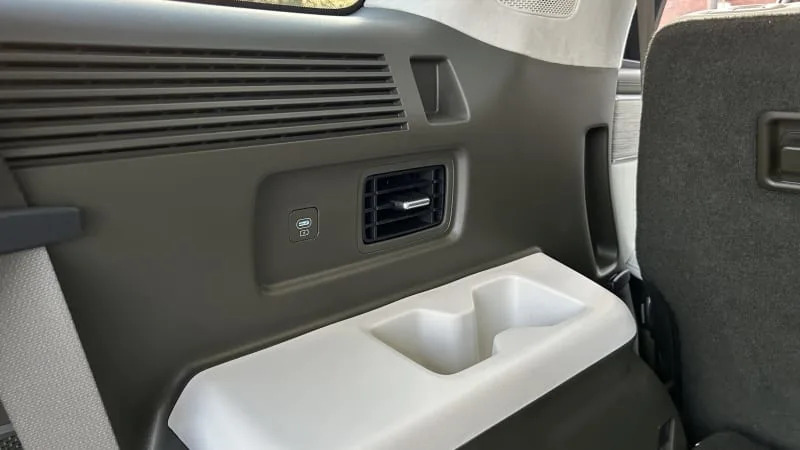
How big is the Santa Fe?
The Santa Fe is another three-row Hyundai SUV (like the Palisade), but it’s notably smaller with the big restrictions being third-row space and cargo capacity, particularly when the third row is raised.
That said, you’ll find generous accommodations for first- and second-row passengers, with that boxy design lending itself to mega headroom. Getting into the third row is kind of a hassle, since the seats don’t slide forward enough, but once you manage to wedge yourself back there, the amount of space is just a touch less than what you’ll find in a Palisade. Your biggest annoyance in the way-back may well be the height of the seats that leave your knees pointing upwards. The remaining cargo space behind that third row is just plain tiny, much like the mechanically related Kia Sorento that has similar exterior dimensions. If that’s a problem, loading extra stuff on the raised roof rails is uniquely aided by grab handles in the C pillars that help you hoist yourself up while standing on the rear tire.
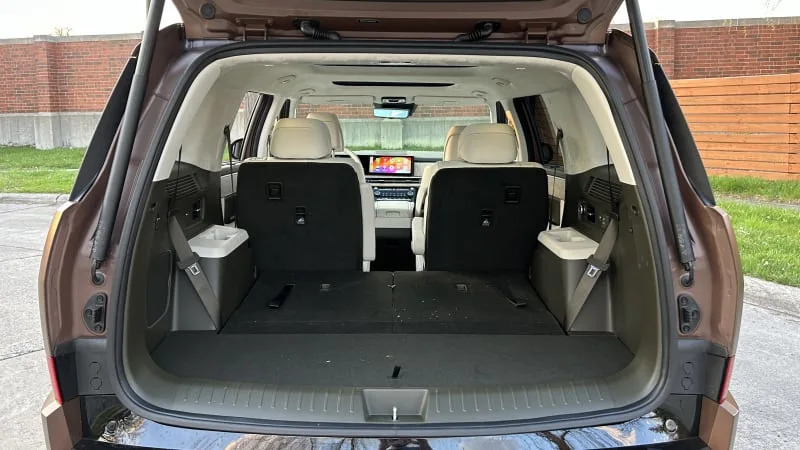
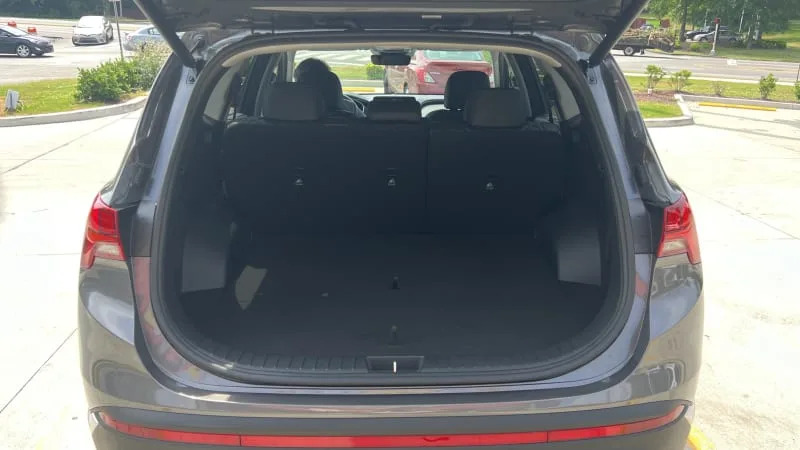
Put the third row down, and you’ll enjoy plentiful space at 40.5 cubic feet. Drop the second row, and that expands to a cavernous 79.6 cubic feet. Loading items into the Santa Fe’s cargo area is uniquely pleasant, too, because Hyundai specifically set out to design a hatch with as wide an opening as possible by installing the hatch struts low on the body where you’d normally find taillights. Look at the extra load width utility on offer side-by-side with the previous-gen Santa Fe (comparison above), and you’ll start to understand why this new one has such a funky rear-end design.
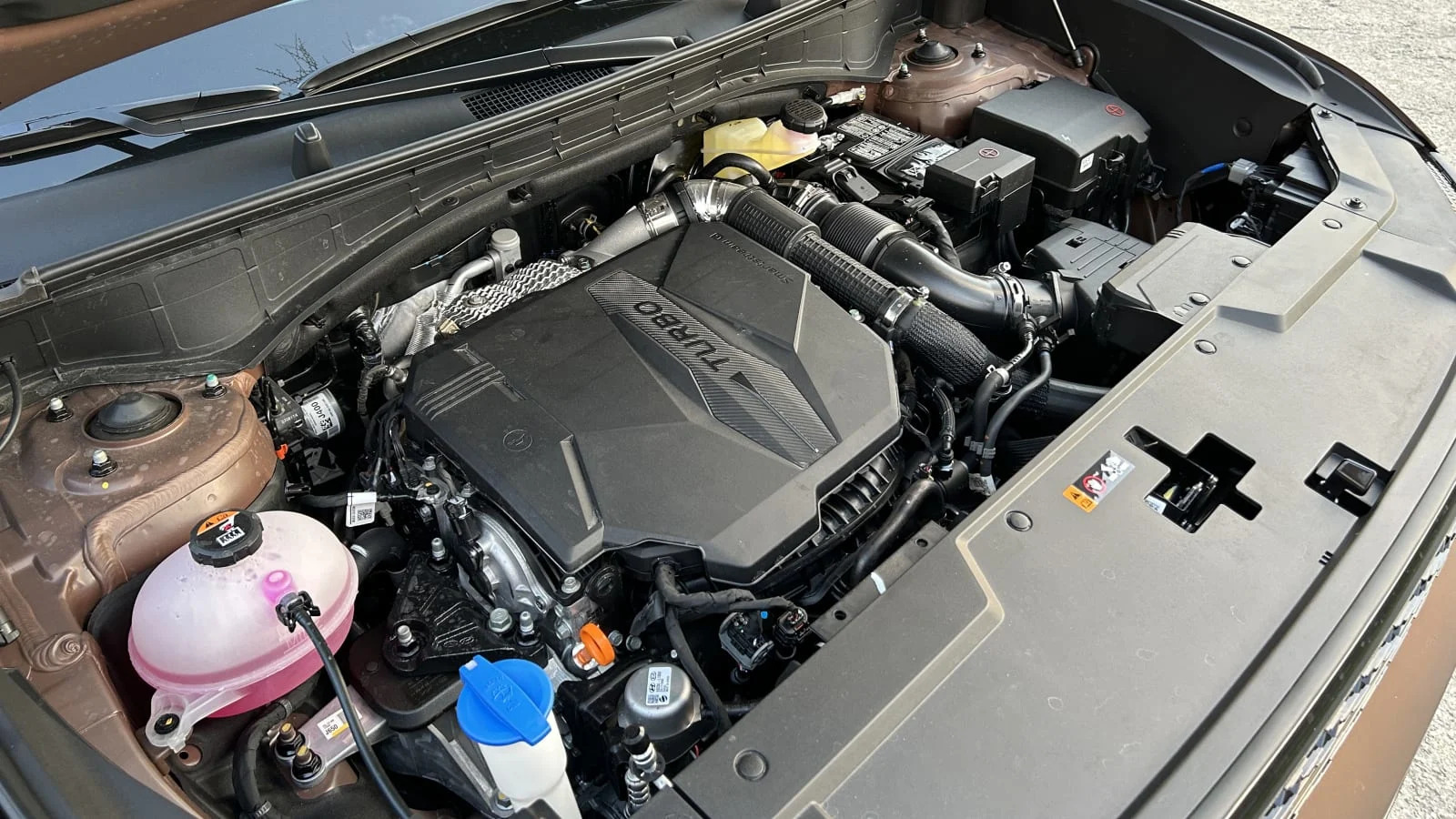
What are the Santa Fe’s fuel economy and performance specs?
There are two powertrain options for the Santa Fe, with the standard model being equipped with a 2.5-liter turbocharged four-cylinder that shifts via an eight-speed dual-clutch automatic transmission. Output from the engine is rated at 277 horsepower and 311 pound-feet of torque. Front-wheel drive is standard, and all-wheel drive is optional on every trim level except for the XRT, where AWD is standard. Fuel economy for the FWD model is listed at 20 miles per gallon city, 29 mpg highway and 24 mpg combined. That drops to 20/28/23 mpg with AWD. Meanwhile, the XRT trim takes an efficiency hit thanks to its all-terrain tires and lifted stance, down to 19/26/22 mpg.
